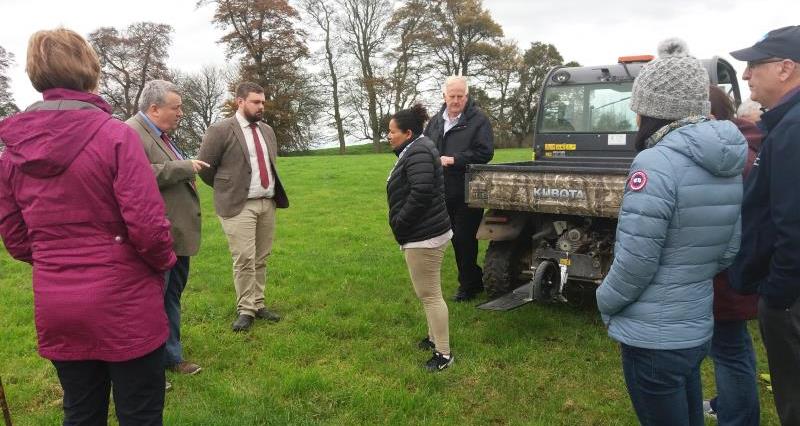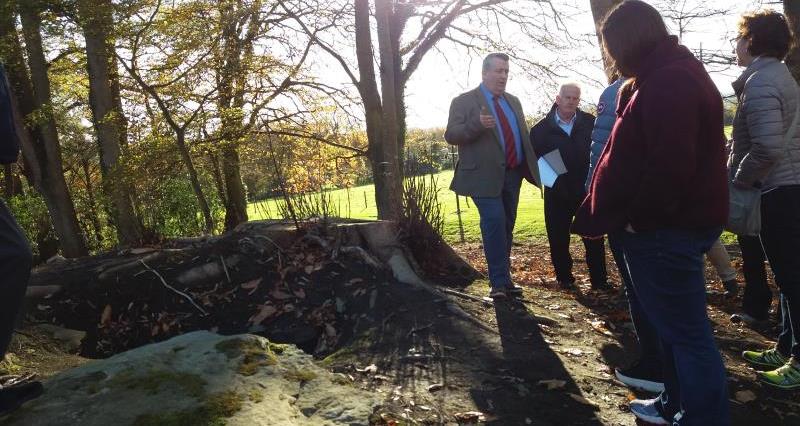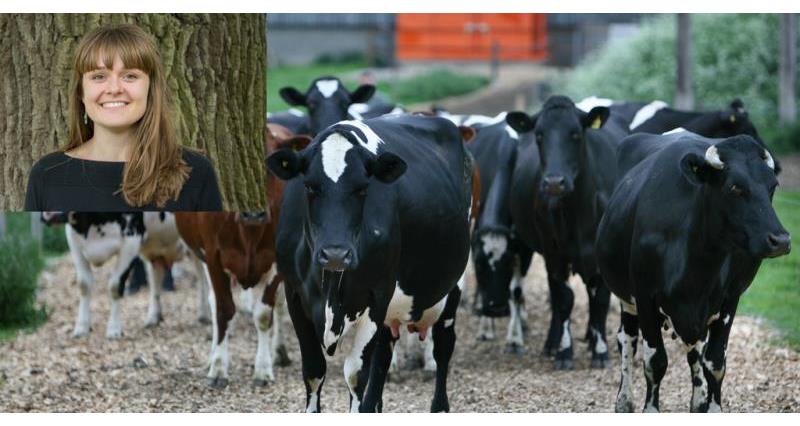For those unfamiliar with the name, Devenish is a global agri-technology company headquartered in Belfast striving to provide leading edge nutritional solutions for the intensive livestock sector. Their aim is to find “innovative solutions to improve livestock, human and environmental health simultaneously”. Investing £30m per annum in research and development, Devenish is Ireland’s largest private investor in R&D.
Delegates met with Dr John Gilliland, Director of Agriculture and Sustainability (and ex-president of the Ulster Farmers Union) at Dowth Hall, a 400 acre estate in County Meath acquired by Devenish to provide a platform for public engagement and the ability to support research looking to reduce the environmental impact of ruminants.

The company made headlines with their world-first clinical trial which proved that regular consumption of naturally enriched, omega-3 chicken and eggs is likely to reduce risk of heart attack, stroke, dementia and depression. This work forms part of efforts to show that farming has a key role to play in delivering sustainable and nutritious food with a health claim – or, as they tell consumers:
“You are what you eat, eats.”
It was clear Devenish takes the “leading edge” part of their company description seriously and likes to claim the title “world-first”. Dr Gilliland reported that Dowth Hall was the first farm in the world to quantify all of its above ground carbon sequestration using Lidar technology. Whilst Lidar technology is not new – in the UK it is already used by coastguards and in the planning stages of HS2 – Devenish are using the technology to determine exactly how much carbon is stored in their woodland and hedgerows. They found a total of 83 tonnes of carbon stored in the trees on the estate and 122 tonnes in the hedgerows.

So how does this equate to emissions emitted by a typical dairy herd?
The amount of carbon stored above ground when Devenish first took over the estate was enough to displace 12% of emissions produced by a herd of 200 milking cows with followers. With proper woodland and hedgerow management Devenish claims this can be trebled to 35%.
Whilst the developed world is yet to recognise this technology, there is currently a German funded project in the Congo which will see 460k ha of rainforest carbon credited. In England, Dr Gilliland believes Defra already has data from Lidar technology on much of the land but have yet to use it to look at above ground carbon sequestration.
With Environment Secretary Michael Gove increasingly focused on a green Brexit, it seems like a good time to re-look at how carbon emissions on farm are calculated. With farmers already managing the majority of the landscape around us, the woodland and the hedgerows, Devenish trials indicate that a Whole Farm Carbon Balance Sheet, looking at both storage and emissions, should be considered when determining the overall contribution of farming to carbon emissions.
